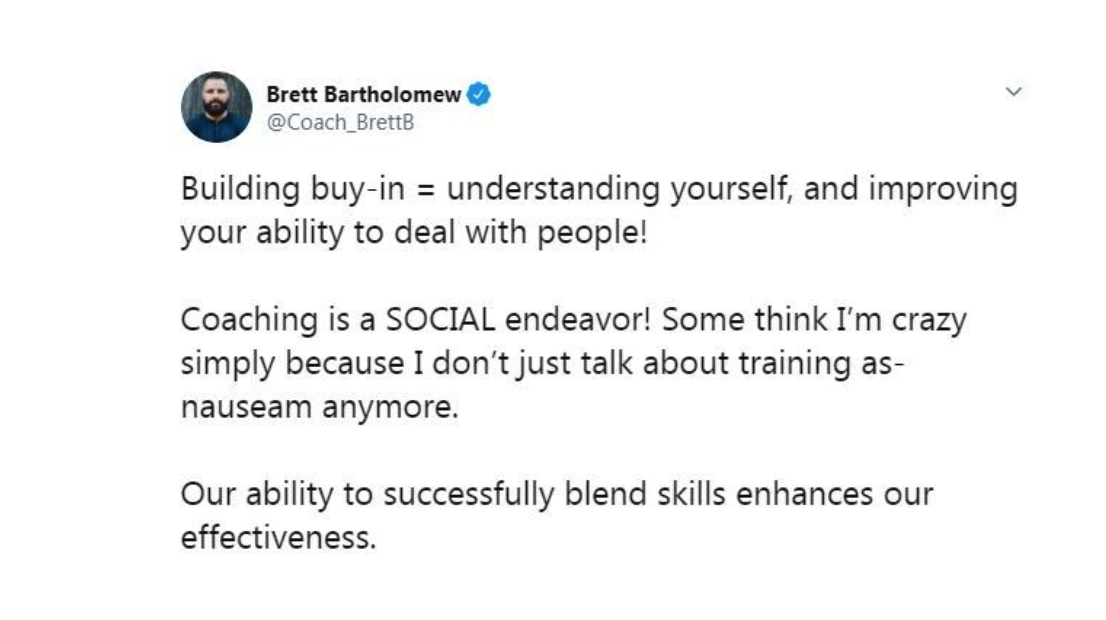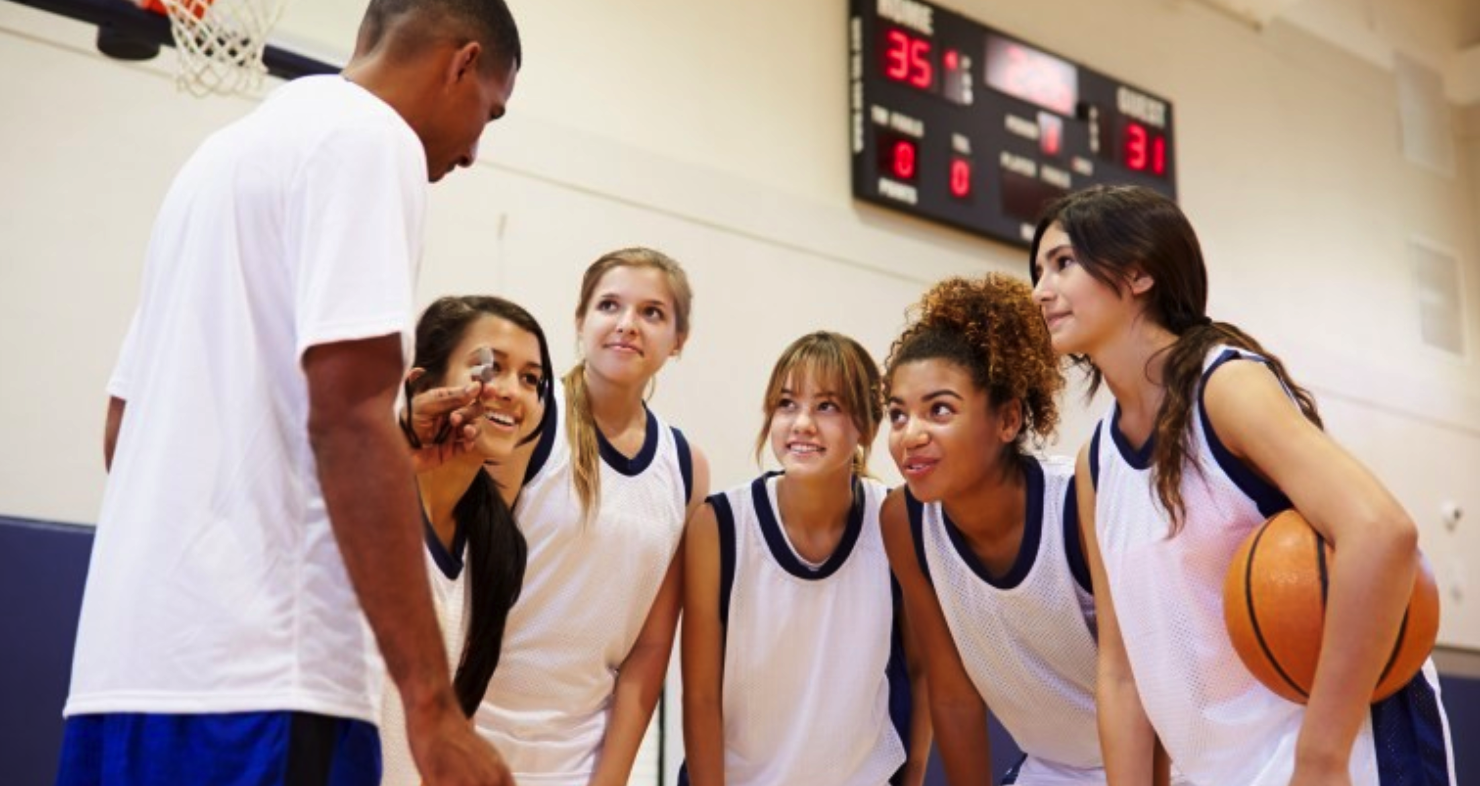There isn’t a formula or book on effective coaching you can read that gives you step-by-step instructions on how to create buy-in. Having coaching conversations to create buy-in has many different layers and some challenges to consider because you’re dealing with the human element. Specifically at the high school level you’ll have to convince parents, administration, coaches and athletes to commit 100% to what you’re offering as a strength coach, athletic trainer, or a sports coach. Here are coaching tips that help create buy-in.
Self-Awareness
As a coach/leader understanding yourself is one of the most important factors when you’re wanting to create buy-in. Brett Bartholomew says it perfectly here:

He follow ups his tweet with a brief video from the Lewis Howes podcast that features Robert Greene (Author: Laws of Human Nature) who says “if you’re terrible with people your life is going to be hell” click the video for more of his comments about being self-aware. Self-awareness allows you to understand people and how they perceive you, your attitude and your responses to them. Self-awareness leads to acting consciously so that you can develop a consistent, positive, selfless, and inclusive program (culture).
Develop High Quality Relationships
As a coach and leader you’re working with people for a majority of your day. Each person has their own personality, learning methods, goals, etc. It’s for you to find out what their why is and understand who they are as a person. If you treat everyone as just a number and don’t actually get to know them and understand them, how are they supposed to buy-in to you as a leader or coach? Your relationship with your athletes will determine the quality of the athletes experience. Focus on building a high-quality relationship with your athletes by communicating, interacting, listening, helping and guiding them. Not just with the workout, but with other aspects of their life.
Individualize Coaching Styles
Everyone has their own learning style. As a leader it’s your job to build the relationship and understand that all of your athletes learn differently. Eric Cressey says “some people are kinesthetic learners (need to be put in a position), some are auditory learners (just need to be told what to do), and others are visual learners (need to watch you demonstrate it)”. Adjusting your delivery to individual learning styles will help the athlete understand what and why which all leads to feeling comfortable and buying-in.
Explain the Why
As a coach you’re an educator. A characteristic that helps coaches create buy-in is explaining the why. You don’t have to explain in detail everything you do or want your athletes to do, but you have to explain enough so that your philosophies are bought into. People often get stuck doing the same thing because they always done it that way and because it’s a habit. When people are comfortable a lot of them don’t like to change. As a coach you will have to get into detail why you want a certain player to be in a certain position on the field or why you want your athletes to perform a certain warm-up exercises before they lift. Explaining the why builds trust and leads to buy-in.
Empower Athletes
Buy-in takes time and at first as a leader you will have to be more hands-on, but once your athletes understand your philosophy you’ll want to take a step back. You can do this by delegating some tasks to your athletes and involving them in the decision process. Empowerment leads to commitment and helps embrace change. Involving your athletes in some of the decision making process shows that you’re all in this together. Another great way to empower your athletes is to reward assertiveness. It’s not always about control and giving them the freedom to make their own decisions is another great way to help build trust which leads to creating buy-in.
These are some of the characteristics that great coaches have. The ones you see that get teams to buy-in to their philosophies. None of this is really rocket science, but it’s not that easy either and that’s because you’re dealing with humans. Humans have emotions, agendas, goals, and you never know what’s going on in a person's life that makes them act differently day in and day out. If you understand that you’re dealing with humans and you show your athletes that you are human as well it’s going to help you build trust. Search to become self-aware, develop high-quality relationships, individualize your coaching style, explain the why, and empower athletes and you’ll have some foundation for creating buy-in with your athletes and anywhere you go in life.
Check out more tips and videos for coaches by clicking here.





.png?width=110&name=Listing%20Image-basketball%20ladder%20drill%20%20(350%20x%20350%20px).png)













